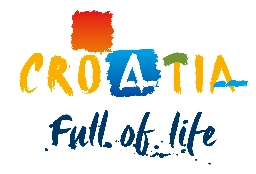




Završje, a place where the time stands still
Završje (Piemonte d’Istria in Italian) is nested on a hill 240 m above the Mirna river valley, in-between Grožnjan and Oprtalj. Its medieval vista is adorned by the leaning tower and the Church of the Blessed Virgin Mary of Holy Rosary, whose invaluable chalice from 1476 is now on display in the Louvre. After serving as the perfect backdrop for the birthplace of Robin Hood in 2017, Završje quickly found its place on the list of top European filming locations.

From ancient history to the present day
According to the historical finds, Završje lies in the place of a prehistoric hillfort, and has been inhabited since the ancient times. It was first documented in the 11th century, as Piemonte. It grew and developed under different rulers, but most intensively in the 16th century after the family of the Venetian Giustignano Contarini bought Završje and Kostanjica at an auction, and ruled over them for the following three centuries.
The village was surrounded by a double ring of walls (remnants of which can be seen here and there) with two gates, of which only the southern one survived.
After a narrow-gauge railway called Parenzana was built under the Austrian rule, Završje began to prosper. During both the Austrian and Italian rule, the village saw major improvements: a school, a post office and an oil mill were built, and various shops and crafts opened. After the Second World War, Završje became a part of the Federal People’s Republic of Yugoslavia. The then economic and political trends contributed to a mass exodus to Trieste. Of the 90 families who had lived in Završje at the time, the village now accounts for as few as 40 permanent residents.
What to see in Završje
CHURCH OF THE BLESSED VIRGIN MARY OF THE HOLY ROSARY – It was built in the 16th century and boasts a wooden statue of the Blessed Virgin Mary with the Child, a stone statue of the Seated Madonna (16th ct.), and a collection of liturgical vessels (15th-18th ct.). A highly valuable chalice from 1476 was sold to the Rotschild family so that a new church could be built, and this item is now on display in the Louvre, Paris.
LEANING TOWER – A 22 m tall Romanesque bell tower leans 40 cm to the north. It is located by the Church of the Blessed Virgin of Mary of the Holy Rosary, and features a conical roof where guards used to stand watch in the past times.
CASTLE – It was built in the 11th century and is known as a palace of the noble Contarini family. It comprises a residential part and farm buildings surrounding the yard.

WALL REMNANTS AND TOWN GATES – Only remnants of the double ring of walls have survived to date. The Romanesque southern town gate was reconstructed in 1879, and fully renovated in 2002. It is well preserved, with a clearly visible coat-of-arms of the Contarini family and a relief from the Roman era with characters from the Greek and Roman mythologies (Ariadne and Bacchus).
PARISH CHURCH OF THE NATIVITY OF THE BLESSED VIRGIN MARY – It dates back to 1792 and features pairs of side chapels, a dome ceiling above the shrine, several altarpieces from the 18th century, an organ from 1740, and paintings by Gildo de Troya (1923).

CHURCH OF ST ROCCO – This Gothic church was built in 1556 and extended in the 18th century.
FRESCOES IN ČIRKOTI – The Church of St Primus and Felician by the cemetery in Čirkoti near Završje takes pride in the recently discovered two layers of frescoes dating from the 13th and the 14th century, and a wet plaster graffito in Gothic script, one-of-a-kind in Istria. The surface layer of the 14th-century frescoes portrays Christ on the throne with a mandorla, surrounded by the Evangelists’ symbols, and a number of apostles under arcades. The older frescoes depict The Kiss of Judas, The Prayer on the Mount of Olives, and Jesus Before Pilate.
PARENZANA – The former narrow-gauge railway that connected Poreč and Trieste is today The Path of Health and Friendship and Istria’s most attractive cycling trail, with numerous viewpoints, tunnels and viaducts.
OIL MILL AND FOUNTAIN – Both are located close to the town entrance.
ROMANIČKA ULICA (ROMANESQUE STREET) – This paved street leads to the part of the town that was once protected by double walls, with the town gate.
OLD SCHOOL OF ZAVRŠJE – The old school building is today home to the Multi-purpose Cultural Centre and the Museum of Folk Instruments.


Destinations
Additional Information


©2026 Colours of Istria. All rights reserved. No part of this site may be reproduced without our written permission.

















.jpg&w=3840&q=75)

.jpg&w=3840&q=75)




